26 Summer Safety Tips Every Dog Owner Should Know
This post shows you the essential summer safety tips for dogs you’ll want to remember!

Summer is super fun and the perfect time to relax with your dog, but there’s much to watch out for. From heatwaves to tick protection, staying on top of these tips will help give your dog the best summer ever!
Keep Your Dog Cool in Hot Weather
1 Avoid Walking on Hot Sidewalks and Streets
The number one problem I have during summer is taking my dog out for a walk in July and August.
Thanks to poor urban planning (and real estate investor greed), we have almost zero green space and only hot concrete.
That’s why it’s super hard to take him out when it’s hot, as sidewalks get very hot!
If you’re unlucky like I am, you need to do the hand test and check just how hot the street is before you go out.
Your dog’s paws are gentle and sensitive to heat, and they use their paws to help cool down. So what may look safe to you can actually be very dangerous for them.
There are several things you can do:
Since my dog has to go out at least 3 times a day (ideally 4), he still needs to go at 5 p.m. when it’s very warm. But I can take him out in shaded areas and up to the nearest park so he can do his business there.
So we always go the same route.
2 Walk Early in the Morning or Late Evening
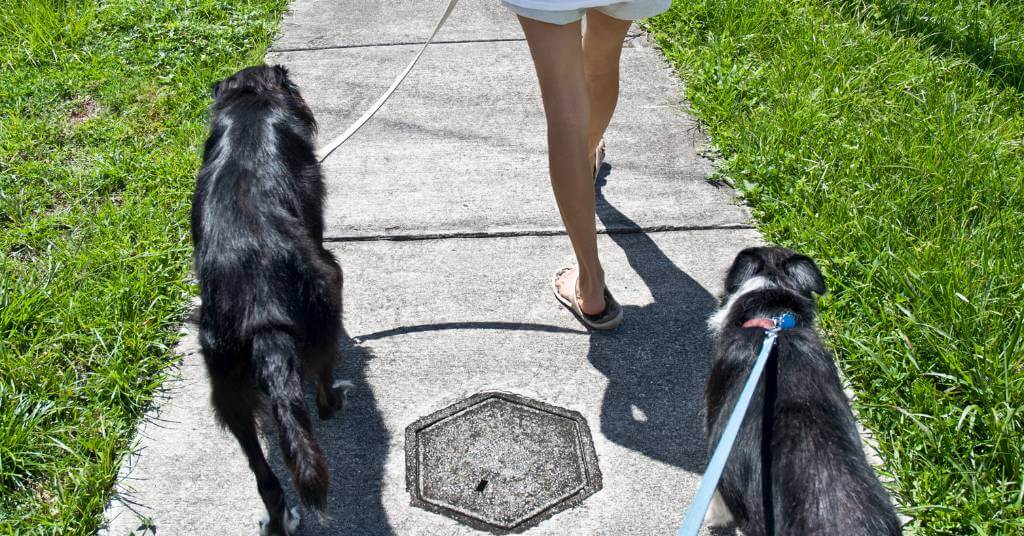
I know this is easier said than done, especially if your dog is used to the same routine, but for longer walks, you definitely need to plan to go out early in the morning or late evening.
Late evening walks during summer are our “fun walks” where we wander the streets, eat ice cream, and drink lots of water (and pee everywhere… well, at least some of us do).
Even though it’s super hot, dogs still need entertainment, the chance to experience different smells, and opportunities to socialize with other dogs.
When it comes to early morning walks, we like to take our dog for a good 20-minute walk so he can do his business but also explore a bit, so he’s hungry and tired when we get home and ready for a long nap (under the AC).
Now, for those urgent mid-day walks when my dog simply has to go, we follow the tips from section #1. We only go in shaded areas, but we have a bonus tip!
Then we go to the mall! He loves playing with other dogs, sniffing around, and getting petted and kissed in Sephora (he always smells so good after the ladies play with him). We usually buy some treats, too. Since the mall is huge, he can walk for 30–45 minutes without going in circles.
So it’s a super fun and safe way to spend some time socializing when it’s 35 °C (95 °F) in July!*
3 Provide Plenty of Fresh Water
You already know this, but your dog needs access to fresh water all the time.
I don’t have a water cooler or dispenser, but you can get one if your dog spends a lot of time alone at home and you’re worried his water won’t stay fresh.
We work from home, so we can change his water every couple of hours.
In summer, we have a special Brita water pitcher just for him. We keep it in the fridge, and it’s always super cold.
When we go out for walks, we don’t carry a water bottle because we have lots of drinking fountains in the city. Some are even specifically designed for dogs!
But when we go to the mall or anywhere without water access, we carry a water bottle and a small bowl so he can drink.
If you’re going to spend a lot of time outside, carry your dog’s water in an insulated bottle.
4 Get a Cooling Mat and a Cooling Vest
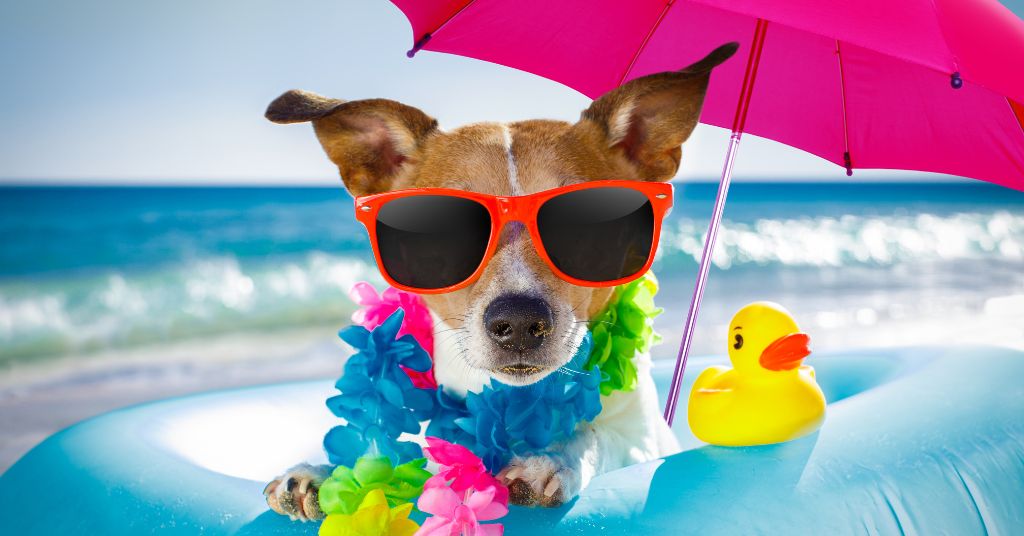
In the summer months, we have the AC on all the time. There’s a special spot on the floor where our dog sleeps, directly below the AC, where it’s cool.
He’s a double-coated dog, so his double coat works like insulation, but as a long-haired dog, he still doesn’t like being too warm.
That’s why we got him a cooling mat. He doesn’t love it, but when he wants to sleep in another room (like the kitchen, where there’s no AC), he’ll use the cooling mat.
I haven’t tried a cooling vest for dogs, but I’m sure some dogs would go crazy for it.
Cooling mats, pads, and vests can really help during heat waves, so it’s a good idea to get some to help your dog in those long, hot (but wonderful) summer months.
5 Set Up a Kiddie Pool or Sprinkler in the Yard
If you live in a house and have a backyard, you have to try this!
Dogs simply love water play, and if you set up a kiddie pool or sprinkler, your dog will go crazy!
Just a word of caution. Even though they’ll have fun in the sun, it’s not the best idea to set up water play in the middle of the day.
It’s better to do it in the morning or late afternoon when it’s still warm but not super hot.
After the water play, be prepared to give them a good rinse and dry them with a hairdryer (on low settings), as dogs can get smelly if they stay wet and aren’t dried properly.
Summer Food Tips and Frozen Treats
We can cool down from the inside, with the help of ice cream and ice pops! The same goes for our dogs.
Giving them cooling foods like fresh fruits, veggies, ice treats, and dog-friendly ice cream is a great way to help them beat the heat.
Summer foods are refreshing, hydrating, and easy on the stomach, so it’s smart to work them into your dog’s summer routine.
6 Make Frozen Snacks
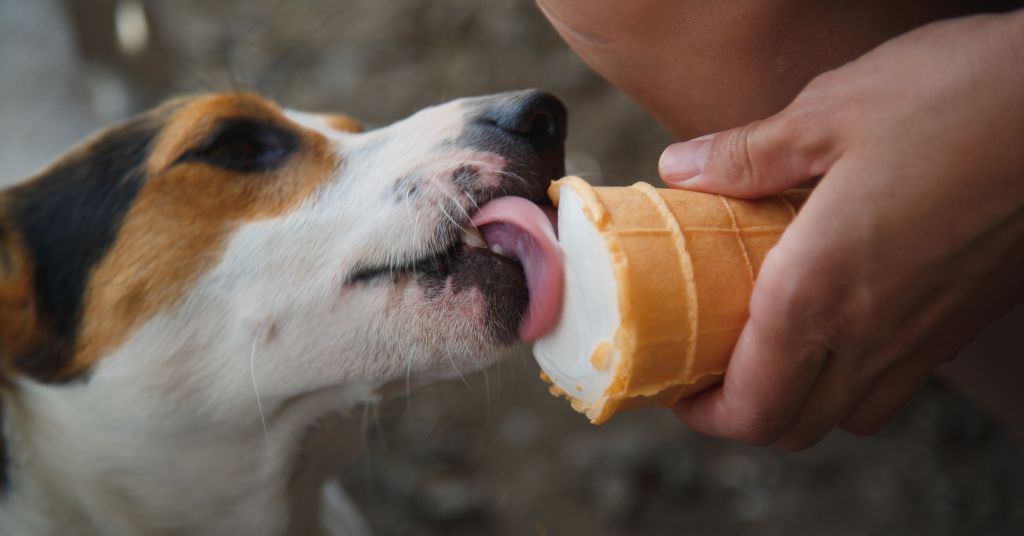
You can make frozen dog treats from fresh fruit! That can be your dog’s ice cream!
If you need more inspiration for dog-safe fruits, you can check out this guide. I wanted to make sure to cover all the low-sugar fruits for dogs that are perfectly safe and easy to mix into an ice cream.
7 Make Your Dog a Frozen Stuffed Kong
Some of the best Kong fillers include summer safe treats like mashed bananas, peanut butter, and yogurt.
But Kong fillers are even better if you leave them in the freezer for 15-20 minutes!
You want to include foods that are easy on the stomach, good when (slightly) frozen, and foods that give your dog enough energy. Find them all here in one place and make delicious treats this summer!
Some of the best Kong fillers for summer can be:
…and so many more!
8 Feed Your Dog Bone Broth
Bone broth is a great way to keep your dog hydrated in the summer.
Dogs love the taste, and it’s very healthy for them. It’s a natural source of collagen, glucosamine, and chondroitine, three things that are essential for your dog’s joints.
You can get dog-friendly bone broth from Amazon, but you can also make it from scratch. In case you want to try, I provided detailed instructions in my glucosamine overview for dogs.
9 Don’t Feed Your Dog When It’s Super Hot
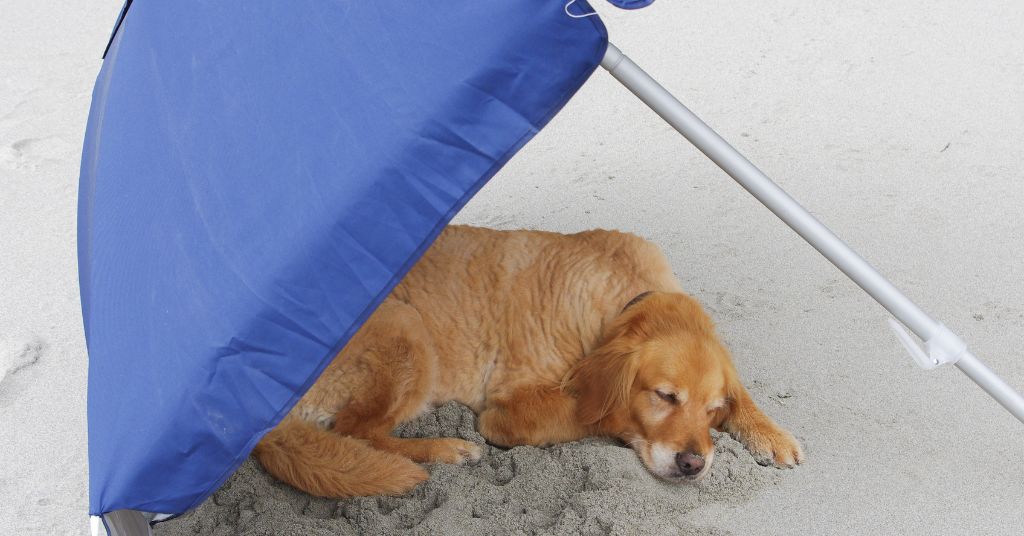
If your dog likes to eat on a schedule, you should slowly start shifting their feeding time to the cooler parts of the day.
This means you shouldn’t feed them in the middle of the day when it’s sunny and hot inside your home.
Mornings and evenings are ideal, but if they still want to eat in the middle of the day, make sure you give them their food in a cool area of the house.
10 Watch for Signs of Heat-Related Appetite Loss
When it’s super hot, don’t be surprised if your dog doesn’t want to eat as much. This is pretty normal, especially during heat waves.
You want to watch for how long this goes on. If your dog skips one meal but is still drinking water, acting normal, and eating later in the day, it’s usually nothing to worry about.
But if it’s refusing food for more than a day, seems tired, or isn’t drinking enough water, it’s time to check in with your vet.
One simple tip that works for us is offering smaller portions at cooler times of the day. Also, you can make their meals more tempting by adding something tasty, like a little bone broth or some wet food.
If your dog’s skipping a meal because of the heat, there are a few things you can check before you call the vet.
Tick, Flea, and Parasite Protection
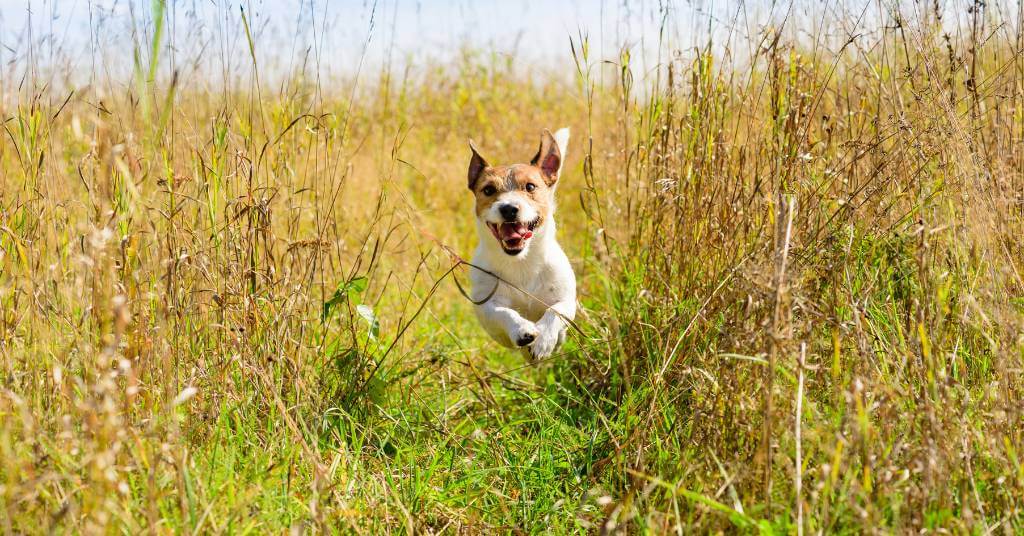
Tick, flea, and parasite protection is one of the most important summer safety tips for dogs because these pests are everywhere.
It’s often a summer emergency because a single tick bite or heavy flea infestation can lead to infections and allergic reactions.
But don’t worry, there are super simple solutions to protect your dog from these annoying pests!
11 Use High-Quality Tick Preventatives (That Work for Your Dog)
Years ago, when my dog was little, all the vets around me used to recommend NextGard Spectra for heartworm and tick prevention.
I thought it was the best thing ever.
Until it wasn’t.
My dog had a horrible reaction to NexGard Spectra. He had a seizure, and that seizure happened two weeks after we gave him the Spectra. This had happened twice.
First of all, you can find information about seizures on their website.
Then you can read a lot online about how it can be a dangerous battle and how some dogs experience symptoms of epilepsy, and more.
So, before a vet recommends something like a pesticide that targets the central nervous system, do some research on your own and make sure to check online communities to see what real people say.
I’m not saying this will happen to your dog, I just want to share my experience as I think it’s helpful.
For my dog, we use Advantix. A simple tick repellent that goes on the skin (behind the neck and above the tail).
You buy it based on how much your dog weighs, and you’re good for 30 days. All my dogs used and still use Advantix, and I’ve never had any problems, and we didn’t have issues with ticks.
When it comes to other parasites, you need to talk to your vet before you do anything.
The biggest danger in the summer months is heartworm. It spreads from host to host through the bites of mosquitoes. And in summer, you’re going to have lots of mosquitoes, especially near water.
Now, to prevent heartworms, first you need to get your dog tested. Your vet will need to draw some blood and test for the presence of heartworm.
Why is this step essential? Heartworm prevention medication can be extremely dangerous for dogs that already have heartworms but don’t have any symptoms!
Please take this seriously and get tested.
After the results come back negative, start with the preventive treatment. Listen to your vet and only get FDA-approved treatments.
My dog gets a pill every 30 days.
And listen to this, based on new research and simply global warming and how our winters and springs are very warm right now, it’s recommended you don’t stop giving them heartworm treatment in the winter months.
So, you should plan for year-long prevention!
12 Do Daily Tick Checks After Walks
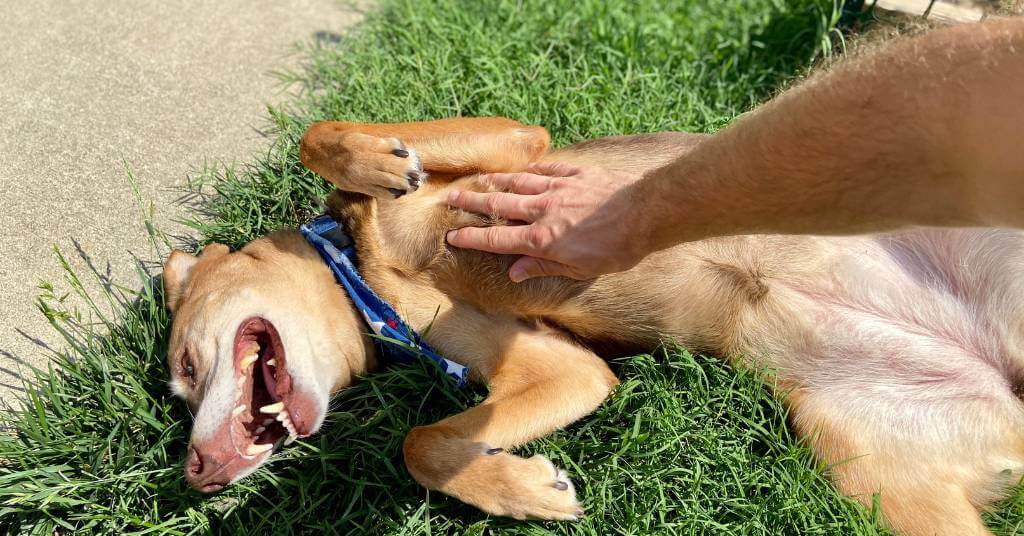
After every outdoor walk, I always check my dog for ticks. I go over his ears, between his toes, around the groin area, and at the base of his tail.
It only takes a minute, and it’s so worth it because if you catch a tick early, you can remove it before it causes trouble.
I just use my fingers to feel through his fur and check for any little bumps.
If you live in a tick-heavy area, don’t skip this. It’s one of the easiest things you can do to protect your dog.
Also, when it comes to tick repellants, set an event in Google Calendar to repeat every 30 days (and share it with your partner so you don’t carry the mental load) and buy repellants in bulk so you can ensure your dog is protected at all times.
13 Keep Lawns Mowed and Avoid Tall Grass
If you have a backyard, make sure to keep the grass short during the summer. Ticks love hiding in tall grass, so mowing regularly can really help keep them away.
When we go for walks, I also try to avoid letting my dog wander through overgrown areas or fields with tall grass, especially in the summer when ticks are everywhere. It’s such a simple thing, but it makes a big difference.
14 Groom Regularly With a Comb or a Good Brush for the Undercoat
If you have a long-haired dog, it’s so important to brush them regularly with a comb or a good undercoat brush. This helps prevent knots or mats.
Regular grooming is especially important during spring shedding to prepare them for the summer.
That’s when you need to comb them often to remove all the dead hair and fur they’re losing. If you don’t, that extra undercoat can stick around and make them way too warm in summer.
Brushing them out helps with insulation and heat protection because it keeps only the healthy coat in place.
The coat works like a layer that keeps heat out and cool air closer to their skin. So when you keep it clean and mat-free, it actually helps your dog stay cooler and more comfortable in the heat.
15 Watch for Summer Allergies
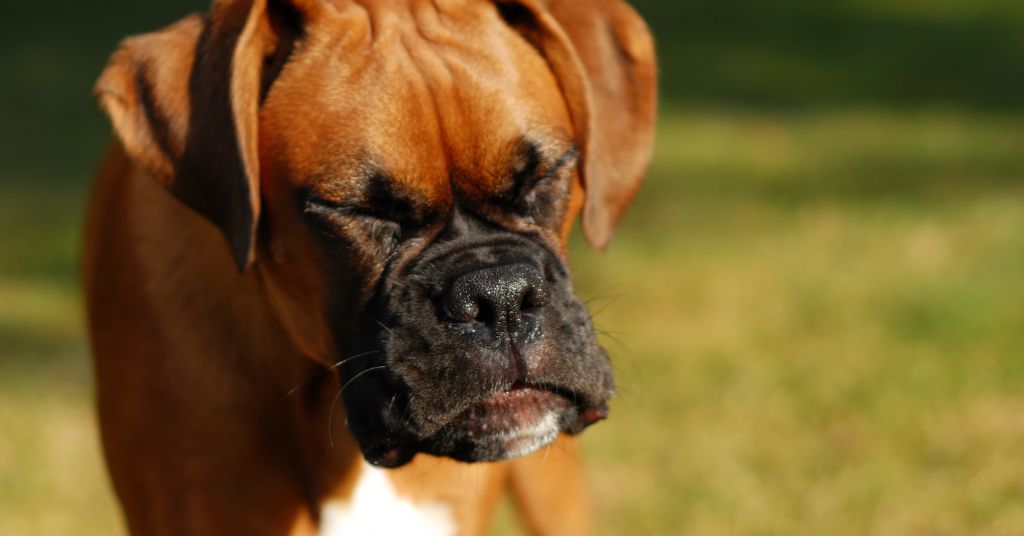
Yep, dogs can get summer allergies, too! Just like people, they can react to things like grass, pollen, weeds, and even certain plants.
If your dog is scratching a lot, licking their paws, shaking their head, or you notice red, itchy skin or watery eyes, it might be allergies. Grass and weed pollen are some of the biggest triggers in summer, but mold and dust can also play a part, especially if you’re spending time outside.
What helps? You can wipe down their paws and fur after walks to remove pollen, and if they’re really struggling, check in with your vet. They might recommend allergy meds or something to help calm the itching.
Here Are The Common Plants That Trigger Dog Allergies in the United States:
- Bermuda grass
- Timothy grass
- Ryegrass
- Ragweed
- Lamb’s quarters
- Pigweed
- Plantain weeds
These grasses and weeds release a ton of pollen in the summer, and that’s usually what gets on your dog’s skin and paws, causing all the itching and scratching.
If you notice your dog reacting, it can help to rinse or wipe off their paws and belly after walks, especially if you’ve been in grassy areas. And if it’s really bad, talk to your vet about next steps.
Watch Out for Sharp Grass and Foxtails
One of the things I hate the most about summer is the foxtails! I’m traumatized by all the horror stories I’ve heard from dog owners and vets about foxtails getting stuck in ears and even paws!
They are especially dangerous when they’re dry and brittle, as they can get stuck so deep that your dog might need surgery to remove them!
16 Avoid Dry Areas Where Foxtails Grow

The best way to prevent any issues is to avoid areas where foxtails grow.
In my neighborhood, we have them everywhere, but the grass usually gets trimmed every two weeks, so we’re okay. However, I wouldn’t let my dog run freely anywhere there’s foxtail.
It’s simply dangerous.
And you’d think you can pull it out if they get one in their ear, but the more you try, the deeper it gets stuck! Such a nasty thing.
If you see your dog tilting their head to one side, scratching their ear, or if they suddenly start wheezing and coughing, take them to the vet!
Even for “silly” things like a foxtail stuck in the paw, make sure you know what you’re doing. Otherwise, you might cause more damage!
17 Check Ears, Paws, and Nose After Every Walk
In summer, you need to be extra careful, as there are so many insects and annoying dangers like foxtails that you really have to pay close attention to your dog.
That’s why I think it’s necessary to go over these summer safety tips for dogs—so you know how to recognize problems and catch potential hazards on time!
One of the things you should do is check their nose, ears, paws, and armpits after every walk to see if there are foxtails or ticks!
We do this with my dog when we wipe his belly and paws. You can also check these areas when you cuddle (so it’s not stressful for them) and make it a habit to do that every day after every summer walk.
18 Trim Long Hair Between Toes (But Be Careful)
There’s a lot of debate around this one, so let’s break it down.
Some people say you have to trim the hair between your dog’s toes in summer, while others are afraid to touch it because they think it’s there for a reason. And honestly, both are kind of true.
It’s not dangerous to trim that hair if you do it right.
The hair between the toes can trap dirt, debris, ticks, and even foxtails, which makes summer especially risky. So trimming it a bit can actually help you spot things more easily and keep their paws cleaner.
But here’s the catch: if you trim it too short, you’re removing the natural protection that helps reduce friction and irritation when they walk. So don’t shave it off completely; just neaten it up if it’s really fluffy and start to collect junk.
A light trim can help in summer, but don’t go overboard. And if you’re unsure, ask your groomer to show you how to do it safely.
19 Know the Warning Signs: Head Shaking, Sneezing, Paw Licking, Redness, Limping
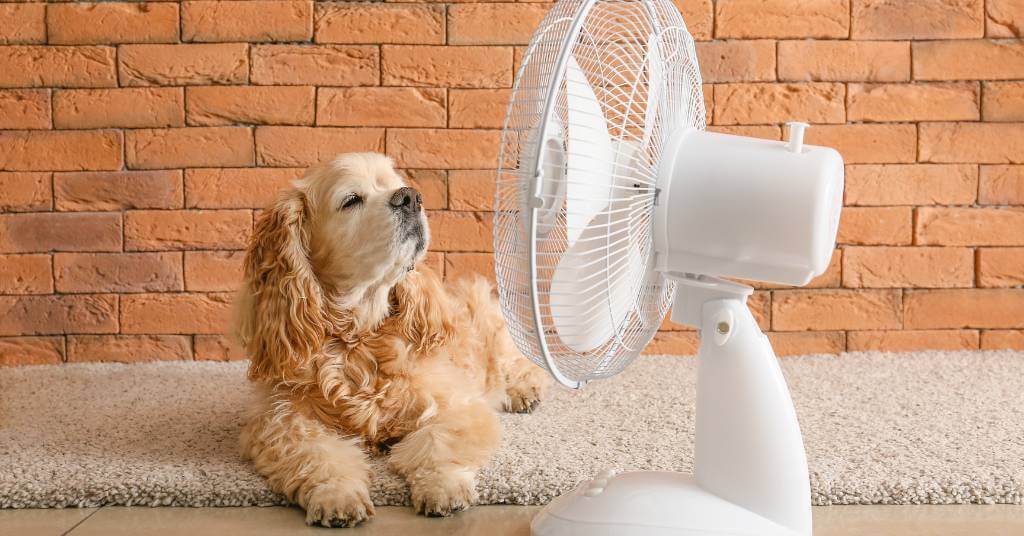
Foxtails and other summer hazards can be sneaky, and sometimes you won’t even notice anything at first. That’s why it’s super important to know the warning signs.
If your dog starts shaking their head, sneezing a lot, licking their paws, or if you notice any redness, swelling, or limping, pay attention. These could all be signs that something is stuck or irritating them.
Even if it looks small, don’t ignore it. A tiny foxtail can cause a big infection if left untreated.
So if your dog suddenly starts acting weird or uncomfortable after a walk, do a quick check and call your vet if something feels off.
20 See a Vet Immediately If You Suspect a Foxtail Injury
Foxtails are not something to mess around with. If you even suspect that your dog has one stuck somewhere, especially in the nose, ear, or paw, go to the vet right away.
They can move fast and go deeper into the body, which makes things so much worse if you wait.
It’s always better to be safe and let a professional check it out than to risk a painful infection or surgery later on.
Recognize Heatstroke and Know When to Get Help
Did you know that states like Texas, Florida, and California have the most reported heatstroke fatalities in dogs?! It’s very dangerous to leave your dog outside when it’s too hot, to leave them in a car, even for a minute, and to let them dehydrate!
That’s why I think it’s essential you pay attention to the warning signs and react on time!
21 Watch for the Heatstroke Signs
Please, for the sake of everyone, if you notice these signs and you know your dog was outdoors when it was very hot or in a hot car, take them to the vet.
22 Know What to Do in Case of Heatstroke
Ideally, you should get your dog to the vet, but sometimes it’s not possible to do that super fast.
Here’s what you should do!
Final Summer Safety Tips for Happy, Healthy Dogs
23 Never Ever Leave Your Dog in a Hot Car
If you could only remember one tip from the entire summer safety tips list, I would say it’s to never leave your dog in a hot car!
Even if you’ve parked your car in a shaded area, let’s say in a supermarket parking lot, it’s not safe.
Even if it seems like it’s not that hot, it’s not safe.
Even if you’re only going to be out for five minutes, it’s not safe.
Cars can get super hot in a very short time. If you also close all the windows, your dog won’t get any fresh air, and they won’t be able to cool down.
If you have to take them somewhere by car when it’s really hot, you need to drive with the AC on, and when you park, you need to take them out. It’s better for them to wait for you in a shaded area in front of the supermarket than in your car, even if it still feels pretty cool since the AC was on.
The best place for them to be during the day is the safety (and coolness) of your home with the AC on and blinds shut.
24 Always Have Water With You
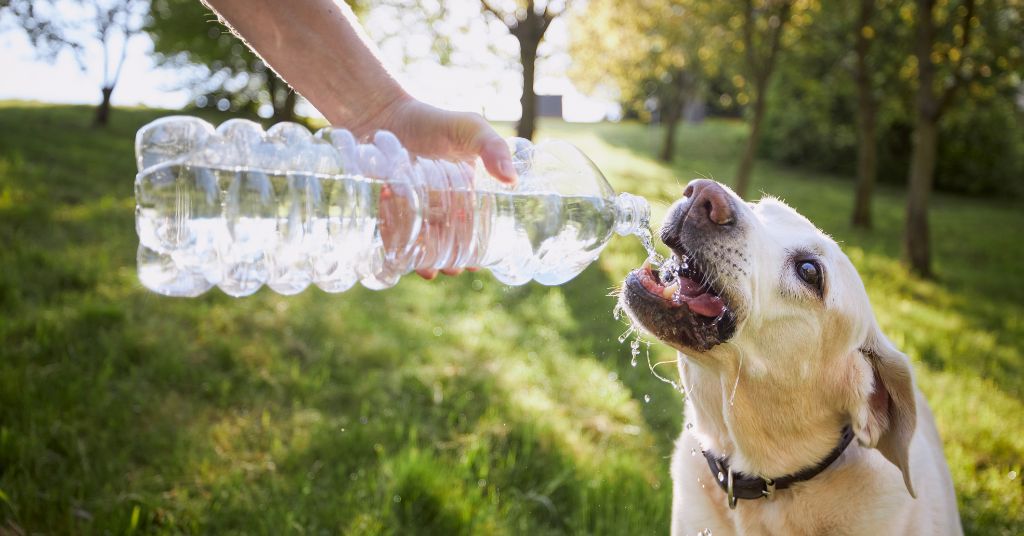
The best tip is to buy an insulated water bottle for your dog and keep it in your bag or in your car, and make sure it’s always fresh.
If you go on hikes and nature walks, then it’s essential to bring enough water as you won’t have the option to buy water somewhere.
25 Use Dog-Safe Sunscreen if Necessary
I don’t have experience with this, but I know that some dogs need sunscreen!
If your dog has a light-colored nose, pink skin, thin fur, or bald spots, they’re more likely to get sunburned. Breeds like Dalmatians, Boxers, Pit Bulls, Greyhounds, and Chinese Cresteds often need a little extra protection.
You don’t have to use sunscreen every day, but if you’re going to be out for a longer time (especially at the beach or during a hike with little shade), you should apply some on your dog’s nose and the top of his ears.
Just make sure you’re using sunscreen that’s made for dogs. Look for something dog-friendly, fragrance-free, and made without zinc oxide.
If you’re unsure, ask your vet what they recommend based on your dog’s coat and lifestyle.
26 Stay Indoors During the Heatwave
I already mentioned how we don’t go out too often during the heatwave (and we only go to the shopping malls that have super strong AC). So, one of the best summer safety tips for dogs and for you is to stay indoors when it’s super hot!
Play catch in the living room, turn the AC on, drink plenty of water, play with puzzle games, use slow-feeders, sleep together, have some indoor fun, and go outside in the evening!
Which of these summer safety tips do you think are the most important? Let me know in the comments!
Don’t forget to pin this post so you’ll always have these safety tips handy!
Love, life, and fur forever!
This post showed you the 26 Summer Safety Tips Every Dog Owner Should Know.
You may also like: